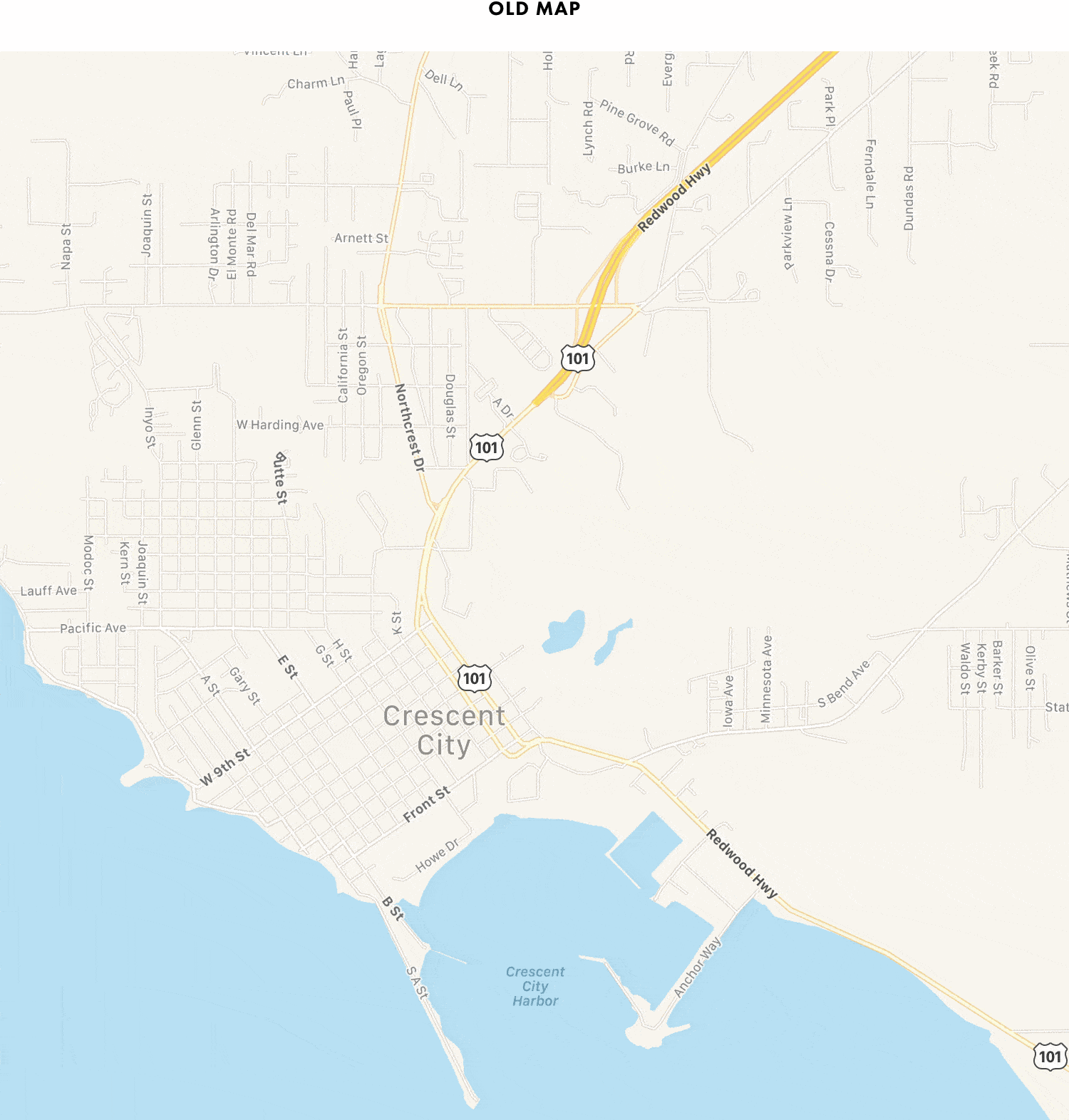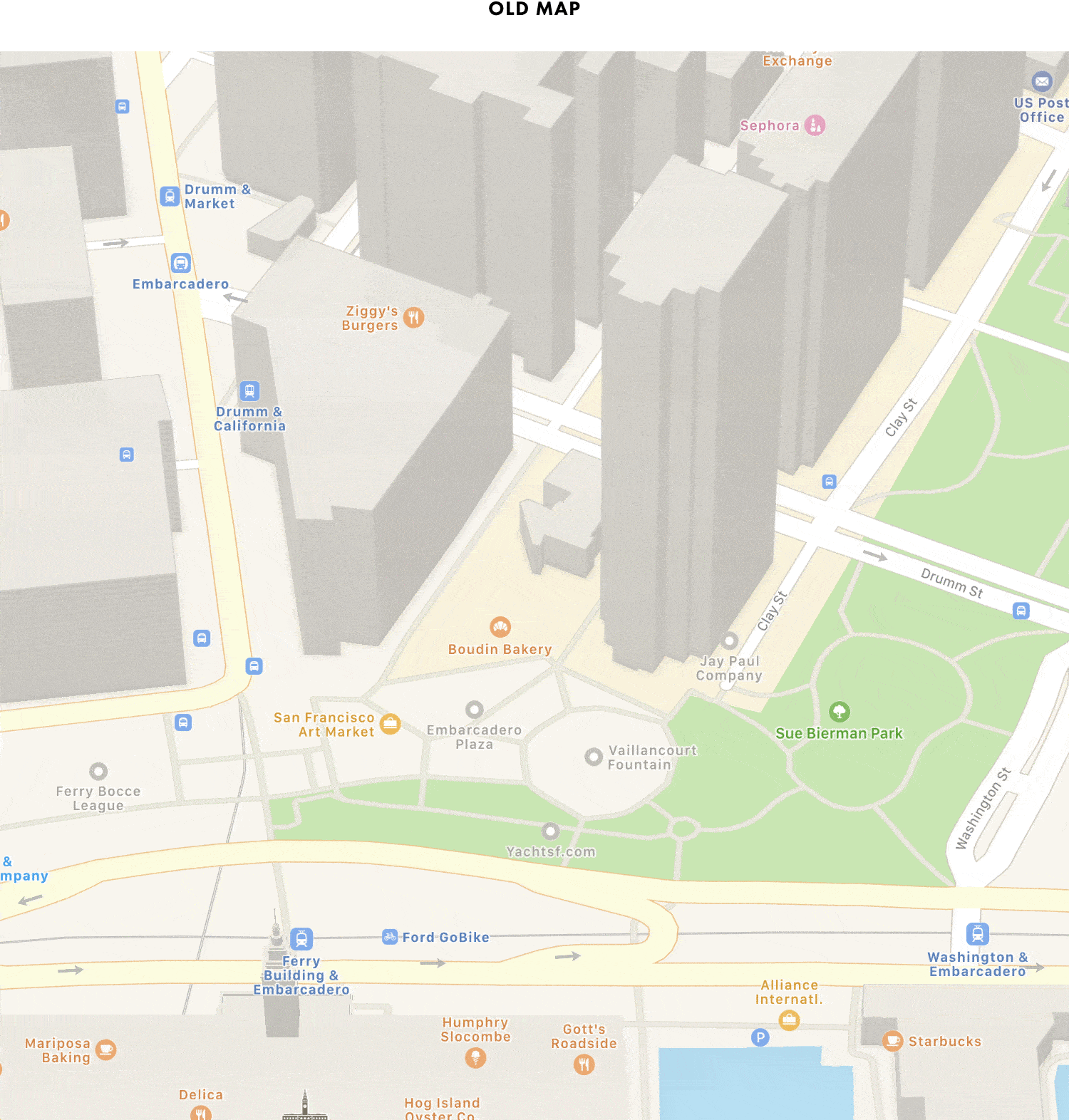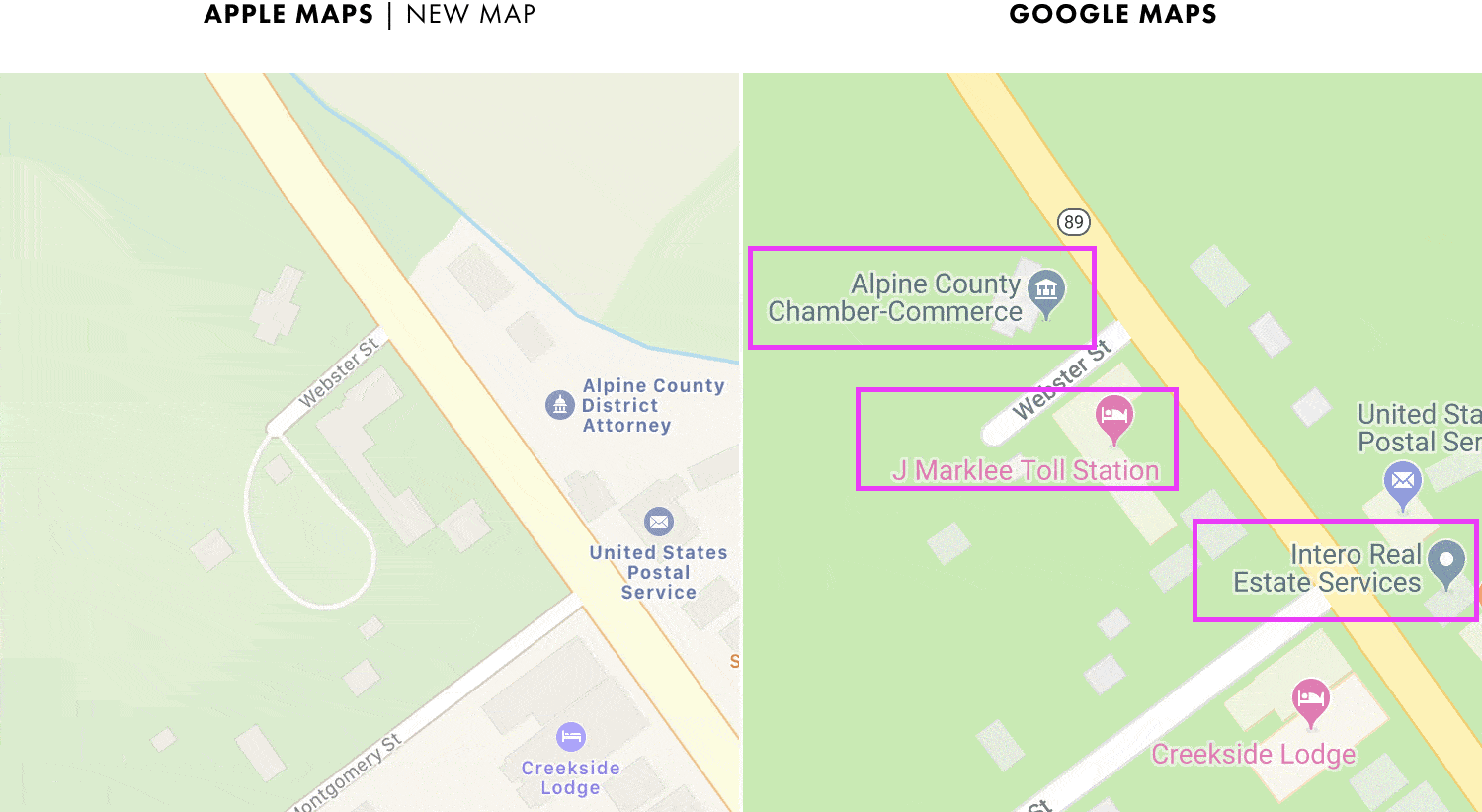Justin O’Beirne has written about the evolution of Apple Maps and how the app compares to Google Maps several times in the past, which we’ve covered on MacStories. In his most recent analysis, O’Beirne asks whether Apple’s new efforts to update Maps has closed the gap with Google Maps. Backed up by over 100 images comparing the two sets of map data, the answer appears to be a qualified yes. In some respects, Apple has caught up and even passed Google, but in other areas, it remains behind.
Apple also has a long way to go before its Maps update is complete. As O’Beirne notes, the currently-updated map data covers a small fraction of the globe consisting of Northern California and a slice of Nevada. However, those 48 California and 4 Nevada counties contain a lot of new details.
One of the primary differences documented by O’Beirne is the amount of new vegetation detail in Apple Maps. The changes aren’t limited to parks and forests preserves. The new maps add significant greenery detail to cities and towns too. The differences and level of detail are striking. Vegetation has even been added to road medians.
O’Beirne believes that Apple, like Google, is extracting vegetation data from satellite imagery. That’s added other features to Apple Maps too like new structures, beaches, harbors, parking lots, and sports fields that weren’t there before.
Apple is also updating building details in places like San Francisco. The buildings are far more detailed, but building height inaccuracies have been introduced too. The inconsistencies and differences between building models leads O’Beirne to infer that humans are tracing the buildings from satellite imagery instead of algorithmically.
Together, the changes are substantial:
And all of these details create the impression that Apple hasn’t just closed the gap with Google—but has, in many ways, exceeded it…
However, looking at Apple’s business data, O’Beirne concludes that Google is still ahead. Google appears to be algorithmically extracting business names from signs along roads whereas Apple seems to be using Yelp, which has a much smaller database than Google. O’Beirne provides several examples of misplaced buildings, which appears to be the weakest spot in Apple’s remapping efforts. Google is also leveraging the information it collects from users to add significantly more location detail to its maps. The weaknesses of Apple’s business data lead O’Beirne to question whether its maps will be ready for a world where autonomous vehicles and augmented reality are more critical than turn-by-turn directions.
O’Beirne’s study is a must-read. The before-and-after GIFs and comparisons to Google Maps and other map providers highlight details that words cannot capture. Although O’Beirne notes that there are indications that Apple may be mapping faster than Google did, it will likely be a while before Apple Maps is updated where you live, but when the new maps do arrive, it looks as though they will be a significant improvement.





